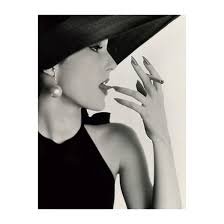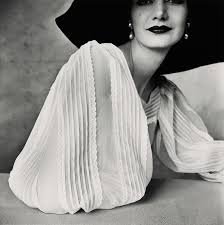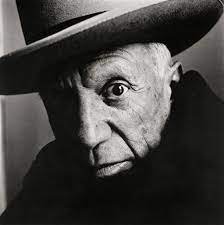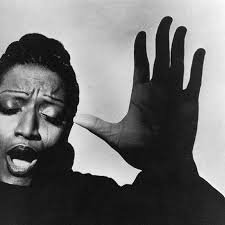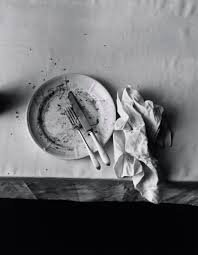Discovering Irving Penn
Irving Penn (June 16, 1917 – October 7, 2009) was an American photographer known for his fashion photography, portraits, and still lifes. Penn's career included work at Vogue magazine, and independent advertising work. His work has been exhibited internationally and continues to inform the art of photography.
Best known for his fashion photography, Penn's repertoire also included portraits of creative greats; ethnographic photographs from around the world; Modernist still-life works of food, bones, bottles, metal, and found objects; and photographic travel essays.
Penn was among the earliest photographers to pose subjects against a simple grey or white backdrop and he effectively used its simplicity. During his early years at Vogue, the magazine's art director, Penn developed a bold graphic sensibility that complemented Penn's chic images and embodied modern taste. His use of monochromatic backdrops of black, white, or gray allowed him complete control of natural lighting conditions and enhanced the visual simplicity of his photographs. In an era when elaborate artificial lighting was the norm, his work stood out from the rest and influenced subsequent fashion photography.[15] Expanding his austere studio surroundings, Penn constructed a set of upright angled backdrops, to form a stark, acute corner. Subjects photographed with this technique included John Hersey, Martha Graham, Marcel Duchamp, Pablo Picasso, Georgia O'Keeffe, W. H. Auden, and Igor Stravinsky.
Penn's still life compositions are sparse and highly organized,[16] assemblages of food or objects that articulate the abstract interplay of line and volume. Penn's photographs are composed with a great attention to detail, which continues into his craft of developing and making prints of his photographs.[17] Penn experimented with many printing techniques, including prints made on aluminum sheets coated with a platinum emulsion rendering the image with a warmth that untoned silver prints lacked.[18] His black and white prints are notable for their deep contrast, giving them a clean, crisp look.
While steeped in the Modernist tradition, Penn also ventured beyond creative boundaries. The exhibition Earthly Bodies consisted of series of posed nudes whose physical shapes range from thin to plump; while the photographs were taken in 1949 and 1950, they were not exhibited until 1980.
Irving Penn, Sewing Machine with 13 Objects, 1979.
Assignment #1:
Your first assignment is to create a still life at home that is made up of objects that are completely unrelated as is shown in the still life by Irving Penn above, Make a series of photos of the still life using your cell phone camera. Print out the best image out of several shots and angles. Next, create a drawing of your photo that allows each object to be redefined visually as Irving Penn in the image below.
Irving Penn, Still Life with Skull, Bottle, and Sewing Machine, 2005. Watercolor with sand and gum arabic over inkjet print on paper.
Vasilios Zatse, Reference photograph for Rooftops,
Irving Penn, Rooftops, 2003. Ink, watercolor, and dry pigment with sand and gum arabic over graphite on paper.
Assignment #2
Irving Penn built a background for his subjects to pose in. This background was made of two walls that came together at 45 degree angles.
He would then pose his subjects within this common visual backdrop that proved to be very successful because it showed movement, shadow and depth. For this assignment you are to create your own background as well and post at least three people using your newly created background.

